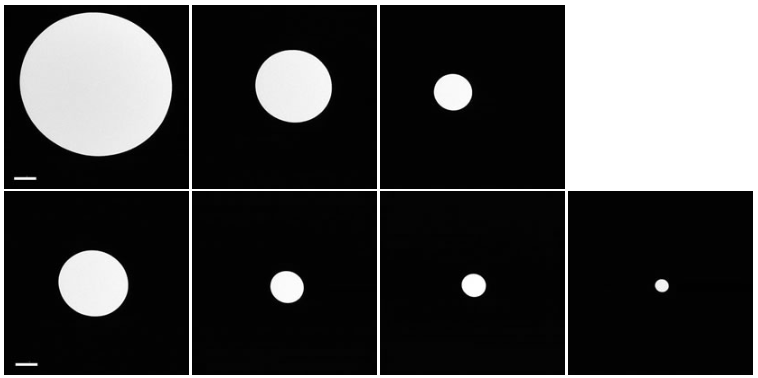There is also a very strong interplay between the convergence/divergence of the electron beam as it passes through the objective lens and objective lens apertures, and what the microscope user sees on the large phosphor screen or in images. When the electron beam is spread to its maximum width, it diverges (expands) as it passes through the objective lens. On the other hand, when the beam is spread so that it just fills any of the objective apertures, it most often (always?) converges (contracts) as it passes through the objective lens. Either condition produces the defocus-dependent change in magnification noted elsewhere. It also affects when the aperture is visible both on the large phosphor screen and in an image recorded using the CCD camera.
The following table illustrates this effect.
*the electron beam was determined to be convergent under this condition by comparing its size to that of the parallel beam.
**the parallel beam condition is approximated by going into diffraction mode, inserting any of the OLA apertures, focusing the edge of the aperture using diffraction focus and finally focusing the diffraction pattern using brightness (the condenser lens) control; this produces a beam that is not quite parallel, but is a very quick way to come very close to that condition.
***under this condition, the electron beam never illuminates the aperture edge.
From the information presented here, it is clear that magnifications "low enough" to make both the OLA and HCA apertures vanish from images are actually quite high, and care must be taken to ensure that images are not clipped by the edge of an aperture. The best way to do this is simply to record all images using the parallel beam condition (which also does a number of other good things in terms of image quality). This is harder to do than it sounds in actual practice, and so the user simply needs to remember that if the beam is not parallel, the aperture edge may appear in some images.


